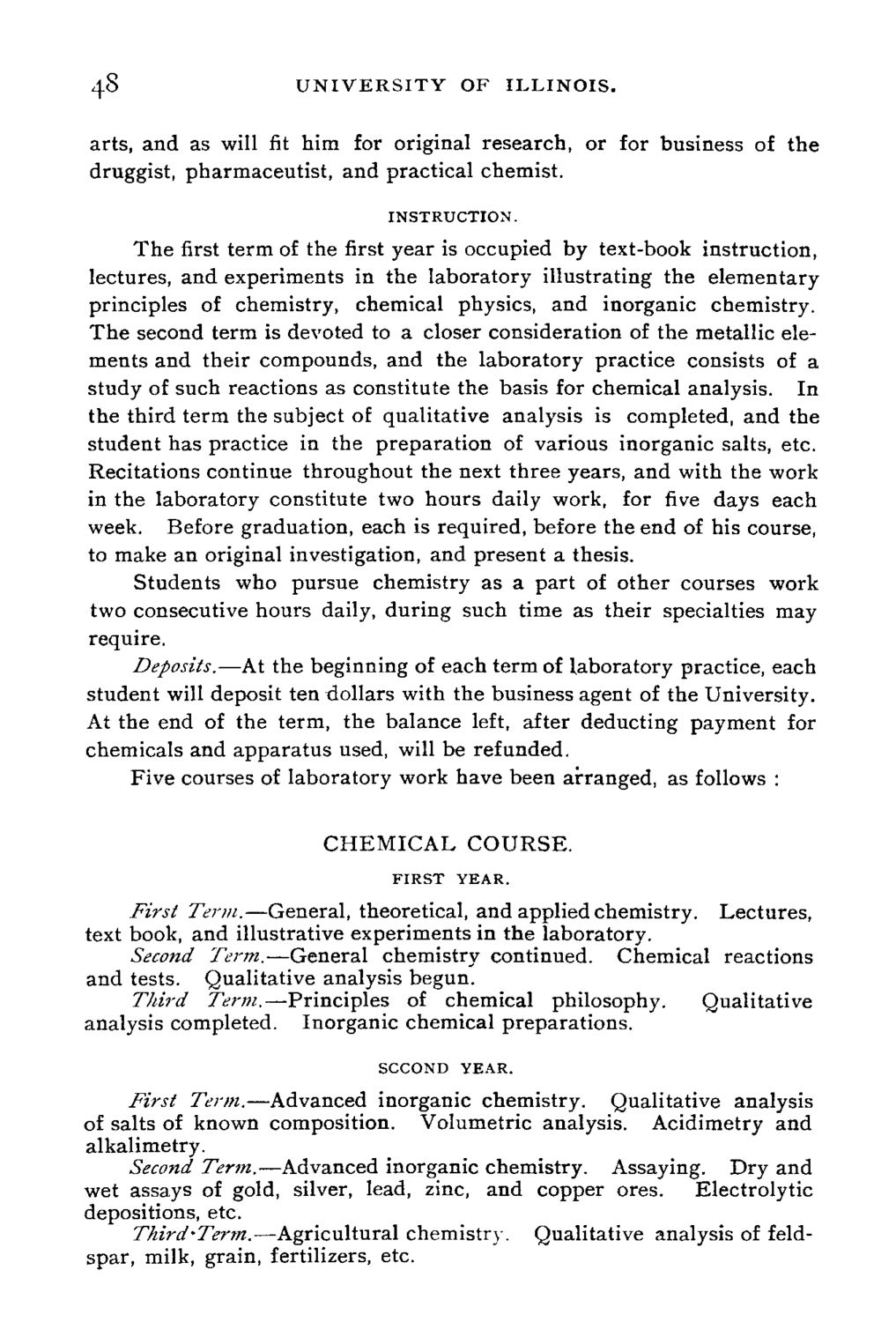| |
| |
Caption: Course Catalog - 1890-1891
This is a reduced-resolution page image for fast online browsing.

EXTRACTED TEXT FROM PAGE:
48 UNIVERSITY OF ILLINOIS. arts, and as will fit him for original research, or for business of the druggist, pharmaceutist, and practical chemist. INSTRUCTION. The first term of the first year is occupied by text-book instruction, lectures, and experiments in the laboratory illustrating the elementary principles of chemistry, chemical physics, and inorganic chemistry. The second term is devoted to a closer consideration of the metallic elements and their compounds, and the laboratory practice consists of a study of such reactions as constitute the basis for chemical analysis. In the third term the subject of qualitative analysis is completed, and the student has practice in the preparation of various inorganic salts, etc. Recitations continue throughout the next three years, and with the work in the laboratory constitute two hours daily work, for five days each week. Before graduation, each is required, before the end of his course, to make an original investigation, and present a thesis. Students who pursue chemistry as a part of other courses work two consecutive hours daily, during such time as their specialties may require. Deposits.—At the beginning of each term of laboratory practice, each student will deposit ten dollars with the business agent of the University. At the end of the term, the balance left, after deducting payment for chemicals and apparatus used, will be refunded. Five courses of laboratory work have been arranged, as follows : CHEMICAL COURSE. FIRST YEAR. First Term.—General, theoretical, and applied chemistry. Lectures, text book, and illustrative experiments in the laboratory. Second Term.—General chemistry continued. Chemical reactions and tests. Qualitative analysis begun. Third Term.—Principles of chemical philosophy. Qualitative analysis completed. Inorganic chemical preparations. SCCOND YEAR. First Term.—Advanced inorganic chemistry. Qualitative analysis of salts of known composition. Volumetric analysis. Acidimetry and alkalimetry. Second Term.—Advanced inorganic chemistry. Assaying. Dry and wet assays of gold, silver, lead, zinc, and copper ores. Electrolytic depositions, etc. Third-Term.—Agricultural chemistry. Qualitative analysis of feldspar, milk, grain, fertilizers, etc.
| |